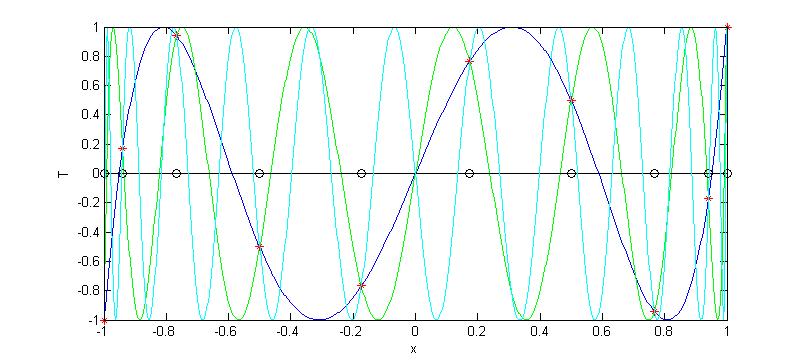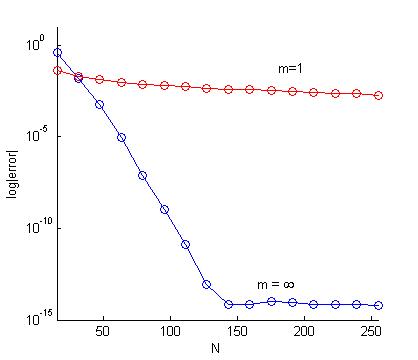
"The Chebyshev polynomials are everywhere dense in numerical analysis."In this manuscript we make use of Java applets to interactively explore some of the classical results on approximation using Chebyshev polynomials. The three applets used are the Chebyshev approximation (CA) applet, the Chebyshev polynomial (CP) applet, and the exponential filter (EF) applet. We also discuss an active research areas that uses the Chebyshev polynomials. The following books [7,8] devoted to the Chebyshev polynomials may be consulted for more detailed information than we provide in this brief presentation.
| (1) |
| (2) |
|
| (3) |
| (4) |
| (5) |
|
| (6) |
| (7) |
| (8) |
| (9) |
| (10) |
| (11) |
| (12) |
|

| (13) |
| (14) |
| (15) |
| (16) |
| (17) |
| (18) |
| (19) |

| (20) |
|
| (24) |
| (25) |
| (26) |